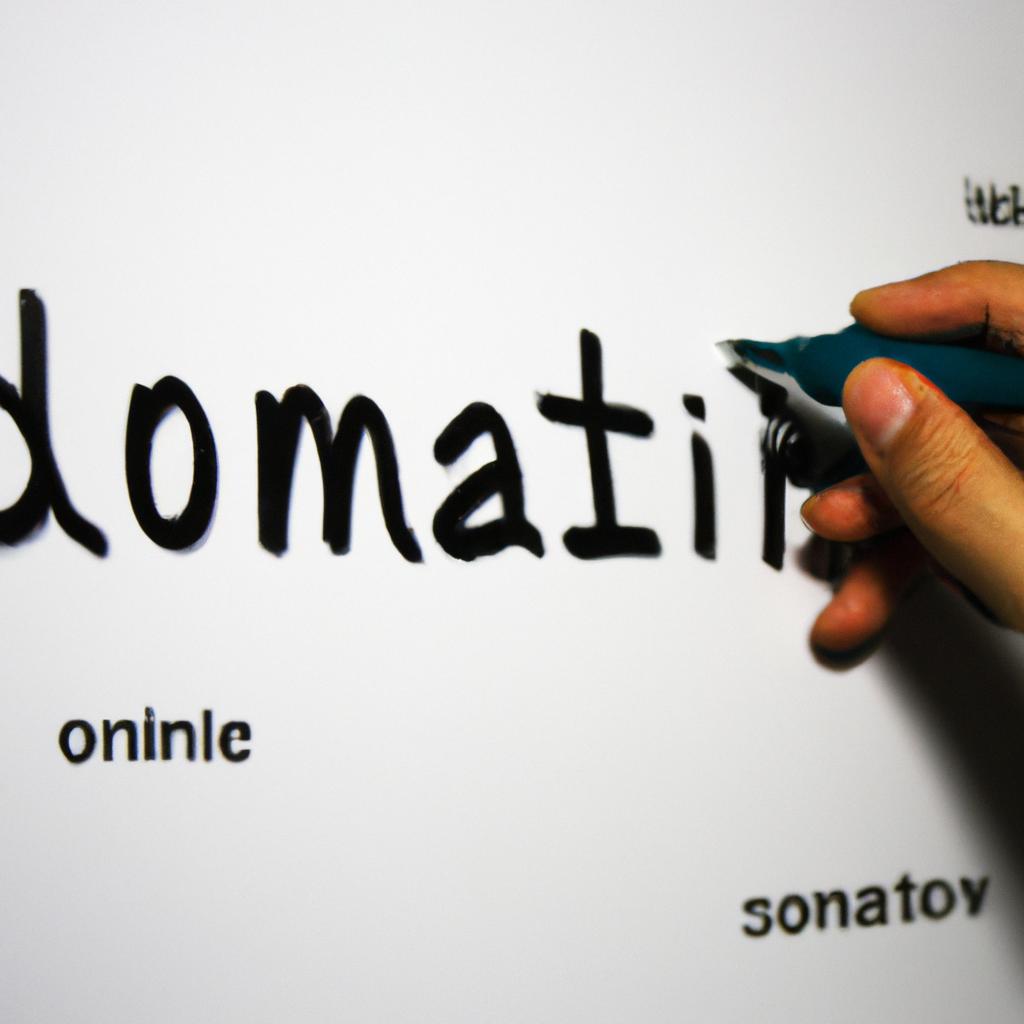Intellectual Property Valuation in Business Appraisal and Services: An Informative Overview

Intellectual property (IP) is an intangible asset that plays a crucial role in the success and profitability of modern businesses. From patents and trademarks to copyrights and trade secrets, IP encompasses a wide range of valuable assets that contribute significantly to a company’s competitive advantage. In today’s rapidly evolving business landscape, it has become increasingly important for organizations to accurately assess the value of their intellectual property. This article provides an informative overview of intellectual property valuation in business appraisal and services, shedding light on key concepts, methodologies, and challenges.
To illustrate the importance of intellectual property valuation, consider the hypothetical case of Company X, a technology startup specializing in developing cutting-edge software solutions. Over several years, Company X invests significant resources into research and development activities aimed at creating innovative proprietary algorithms. These algorithms not only enable the company to deliver superior products but also provide a unique selling proposition compared to competitors. As Company X seeks funding from potential investors or contemplates merger opportunities with larger firms, understanding the true value of its intellectual property becomes essential for making informed strategic decisions. Consequently, accurate valuation of its IP would allow Company X to negotiate investment terms effectively or determine fair compensation during acquisition discussions.
Despite being intangible in nature, intellectual property holds substantial economic value that can impact a company’s bottom line. By accurately valuing intellectual property, companies can better understand the potential financial returns and market opportunities associated with their IP assets. This understanding allows them to make informed decisions regarding licensing agreements, sales or transfers of IP rights, and overall IP management strategies.
Valuing intellectual property involves a combination of qualitative and quantitative analysis. Qualitative factors include assessing the uniqueness and market demand for the IP asset, as well as considering any legal or regulatory protections in place. Quantitative methods may involve analyzing financial projections, estimating royalty rates, conducting market research, and comparing similar transactions in the industry.
However, valuing intellectual property can be challenging due to its intangible nature and complexity. Determining the fair value of an IP asset requires specialized expertise in various fields such as law, finance, economics, and technology. Additionally, changes in technology landscapes or legal frameworks can significantly impact the value of intellectual property over time.
In conclusion, Intellectual Property Valuation is crucial for businesses to leverage their intangible assets effectively. Accurate valuation enables companies to make informed strategic decisions regarding investment, partnerships, licensing deals, and overall IP management. By understanding the true value of their intellectual property, organizations can maximize their competitive advantage and capitalize on opportunities for growth and profitability.
Understanding the Value of Copyrights
Copyrights play a crucial role in today’s knowledge-based economy, where intellectual property is highly valued. To grasp the significance of copyrights and their impact on business appraisal and services, consider the example of a software development company that has recently created an innovative video game. By obtaining copyright protection for their game, this company gains exclusive rights to reproduce, distribute, display, and perform their creation. This example highlights how copyrights can serve as valuable assets for businesses across various industries.
To further appreciate the value of copyrights, it is important to examine the benefits they provide. Firstly, copyrights grant creators legal recourse against unauthorized use or infringement of their work. This protects not only original expressions but also concepts derived from such creations. Secondly, by providing exclusivity, copyrights enable creators to control access to their works and negotiate licensing agreements with others seeking to exploit their content commercially. Moreover, these licenses offer additional revenue streams through royalties or one-time payments. Lastly, copyrights contribute to fostering creativity and innovation by rewarding creators for their efforts and encouraging them to continue producing new works.
- Assurance: Copyright protection offers peace of mind knowing that creative works are safeguarded against unauthorized use.
- Recognition: Creators gain recognition and acknowledgment for their contributions when copyright protections are granted.
- Economic security: The ability to license copyrighted materials provides financial stability and potential growth opportunities.
- Legacy preservation: Copyrights ensure that one’s artistic endeavors will endure beyond lifetime while benefiting future generations.
Furthermore, a comparative analysis presented in the table below exemplifies how different forms of intellectual property vary in terms of scope and duration:
| Intellectual Property Type | Scope | Duration |
|---|---|---|
| Copyrights | Broad | Lifetime + 70 years* |
| Trademarks | Limited | Renewable every 10 years** |
| Patents | Specific | 20 years from filing date*** |
*Duration may vary depending on jurisdiction.
**Renewal requirements and durations differ across countries.
***Patent duration can be extended through supplementary protection certificates.
In conclusion, copyrights are valuable assets that provide legal protection, exclusivity, revenue opportunities, and incentives for creativity. Understanding the worth of copyrights is essential in business appraisal and services as it enables companies to effectively assess their intangible assets and make informed decisions regarding licensing, valuation, and strategic planning. The subsequent section will delve into evaluating the worth of patents, further illustrating how intellectual property valuation plays a pivotal role in today’s dynamic market landscape.
Evaluating the Worth of Patents
Section H2: Evaluating the Worth of Patents
Having explored the value of copyrights, we now turn our attention to another crucial aspect of intellectual property valuation – patents. To better understand their worth and significance in business appraisal, let us consider a hypothetical scenario.
Example:
Imagine a pharmaceutical company that has recently developed a groundbreaking drug capable of treating a previously incurable disease. This innovative medication is protected by several patents which grant exclusive rights to the company for a specified period. The question arises: How do these patents contribute to the overall value of the company?
Paragraph 1:
When evaluating the worth of patents, it is essential to take into account various factors that can influence their economic value. These considerations include:
- Technological Advancement: A patent’s value may depend on how much it advances technology within its respective industry.
- Market Demand: The potential market size and demand for products or services covered by the patent are significant indicators of its worth.
- Competitive Advantage: Patents provide legal protection against competitors, allowing businesses to maintain an advantageous position in the marketplace.
- Licensing Opportunities: Patents can be monetized through licensing agreements with other companies seeking to utilize patented technologies.
| Factors Influencing Patent Value |
|---|
| Technological Advancement |
| Market Demand |
| Competitive Advantage |
| Licensing Opportunities |
Paragraph 2:
Considering these factors collectively enables appraisers and businesses alike to gauge the impact that patents have on enterprise valuation accurately. For instance, if our hypothetical pharmaceutical company holds multiple patents covering different aspects of its groundbreaking drug, this would likely enhance its competitive advantage over rival firms while also opening up lucrative licensing opportunities. Consequently, such robust patent portfolio could significantly increase the overall value and attractiveness of the organization.
Paragraph 3:
Understanding how to evaluate patent worth plays a vital role in strategic decision-making processes within organizations across industries. By comprehending the economic significance of patents, companies can make informed choices regarding investment, marketing strategies, and potential partnerships. Next, we will delve into assessing the importance of trademarks in intellectual property valuation.
With a firm grasp on evaluating patent value, it is now crucial to assess the importance of trademarks as another critical element in business appraisal and services.
Assessing the Importance of Trademarks
Having discussed the evaluation of patents, it is now crucial to delve into another significant aspect of intellectual property valuation – trademarks. A trademark serves as a symbol that distinguishes one company’s products or services from those of others in the market. Understanding and assessing the importance of trademarks can provide valuable insights into their worth within business appraisal and services.
To illustrate the significance of trademarks, consider a hypothetical case study involving two companies operating in the same industry. Company A has a well-established and recognizable brand with a strong trademark, while Company B lacks a distinct identity and relies solely on generic packaging. Despite having similar product quality and pricing, customers are more inclined to choose Company A’s offerings due to its reputable brand image created through effective trademark usage. This example highlights how trademarks can significantly impact consumer perception, loyalty, and ultimately financial success.
Assessing the importance of trademarks involves considering several key factors:
- Brand recognition: The extent to which consumers associate a specific mark with a particular company or product.
- Market competitiveness: How well a trademark sets an organization apart from its competitors and influences customer preference.
- Legal protection: The level of legal safeguard provided by registered trademarks against infringement, counterfeiting, or unauthorized use.
- Future growth potential: The potential for expansion into new markets or product lines based on existing brand equity.
| Factors | Description |
|---|---|
| Brand recognition | Extent of consumer association between mark and company/product |
| Market competitiveness | Differentiation from competitors; influence on customer preference |
| Legal protection | Level of legal safeguards against infringement/counterfeiting |
| Future growth potential | Potential for expansion based on existing brand equity |
Considering these factors allows businesses to assess the value attached to their trademarks objectively. By evaluating each element thoroughly, organizations can gain insights into the role played by trademarks in shaping overall business success.
Valuing the Secrets of Trade
Understanding the importance of trademarks lays a strong foundation for comprehending another critical aspect of intellectual property valuation – trade secrets.
Valuing the Secrets of Trade
In today’s competitive business landscape, trademarks play a crucial role in establishing brand identity and protecting intellectual property. To emphasize this point, let us consider a hypothetical example: Company X, a leading technology firm, invests significant resources into developing an innovative product that revolutionizes the industry. Without adequate trademark protection, competitors could easily imitate their product design or logo, diluting the uniqueness associated with the Company X brand.
Understanding the significance of trademarks goes beyond recognizing their role in preventing imitation. Here are several key reasons why assessing trademarks is essential in intellectual property valuation:
- Market Recognition: Trademarks serve as visual symbols that consumers associate with specific products or services. They contribute to building customer loyalty and trust by distinguishing one company from another within a crowded marketplace.
- Revenue Generation: A strong trademark can become an important revenue stream for businesses through licensing agreements or franchising opportunities.
- Competitive Advantage: By securing exclusive rights to use a particular mark in connection with goods or services, companies gain a competitive edge over others operating in the same market.
- Asset Value: Trademarks have inherent value that can be leveraged for mergers and acquisitions or used as collateral when seeking funding from financial institutions.
To further illustrate the impact of trademarks on business success, consider Table 1 below which highlights some well-known brands along with their estimated trademark values:
| Brand | Estimated Trademark Value (in billions) |
|---|---|
| Apple | $263 |
| $174 | |
| Coca-Cola | $67 |
| Nike | $47 |
Table 1: Examples of Brands and Their Estimated Trademark Values
These figures demonstrate not only the immense monetary worth attributed to trademarks but also how they contribute significantly to overall company valuations.
Moving forward, it becomes evident that trademarks are just one piece of the puzzle when it comes to intellectual property valuation. The next section will delve into the importance of valuing trade secrets, shedding light on their impact on business appraisal and services.
The Significance of Domain Names in Appraisal
These refer to confidential business information that gives a company a competitive edge in the market. One notable example is the famous recipe for Coca-Cola, which has remained shrouded in secrecy for over a century.
When it comes to Valuing Trade Secrets, there are several factors to consider:
- Competitive Advantage: A crucial aspect is assessing how much advantage the secret provides over competitors. This can include things like exclusive access to specialized knowledge or unique manufacturing processes.
- Market Potential: The potential value of trade secrets depends on their ability to generate future revenue streams and maintain customer loyalty. Evaluating market demand and growth prospects becomes paramount here.
- Legal Protection: Properly safeguarding trade secrets through legal measures such as non-disclosure agreements (NDAs) and patents adds considerable value by ensuring exclusivity and preventing unauthorized use.
- Documentation and Security: Well-documented procedures and robust security systems enhance not only the protection but also the valuation of trade secrets.
To illustrate these considerations, let us delve into a hypothetical case study involving Company X, an innovative technology firm specializing in software development with a proprietary algorithm at its core. In this scenario, Company X’s algorithm offers superior performance compared to competing products, giving them a significant competitive advantage.
- Secrecy breeds curiosity
- Unlocking hidden value
- Safeguarding innovation
- Competitive edge preservation
Table showcasing Factors Influencing Valuation of Trade Secrets:
| Factor | Description |
|---|---|
| Competitive | Assessing how much advantage the secret provides over competitors |
| Advantage | |
| Market Potential | Evaluating potential revenue generation based on market demand and growth prospects |
| Legal Protection | Ensuring exclusivity and preventing unauthorized use through legal measures like NDAs and patents |
| Documentation & | Enhancing protection and valuation of trade secrets with well-documented procedures |
| Security |
In conclusion, the valuation of trade secrets involves a careful evaluation of factors such as competitive advantage, market potential, legal protection, and documentation/security. These considerations are vital in determining the monetary worth attributed to valuable confidential information. By understanding these intricate aspects, businesses can effectively safeguard their intellectual property while unlocking hidden value within their organizations.
Transition into subsequent section on “Calculating the Monetary Worth of Royalties”:
Considering the various facets involved in valuing intellectual property assets, it is essential to explore another significant aspect: calculating the monetary worth of royalties.
Calculating the Monetary Worth of Royalties
Section H2: The Significance of Domain Names in Appraisal
Section H3: Calculating the Monetary Worth of Royalties
Transitioning from the previous section, where we explored the importance of domain names in business appraisal, let us now delve into another crucial aspect – calculating the monetary worth of royalties. To illustrate this concept further, consider a hypothetical case study involving an independent musician who has composed and recorded a hit song that is gaining significant popularity on various streaming platforms.
When it comes to determining the value of royalties, several factors must be taken into account. Firstly, the revenue generated by streaming services plays a pivotal role. For instance, if our hypothetical artist’s song receives one million streams per month and earns $0.005 per stream, their monthly royalty income would amount to $5,000. This figure can fluctuate depending on variables such as subscription models or advertising revenue sharing agreements between artists and streaming platforms.
To provide a comprehensive understanding of Royalty Valuation, here are four key considerations:
- Popularity and demand for the work
- Existing licensing agreements or contracts
- Market trends and competition within the industry
- Potential future earnings through synchronization licenses or public performances
Now let us explore these factors in greater detail using a table:
| Factors to Consider | Description |
|---|---|
| Popularity and Demand for the Work | Assessing how widely recognized and sought-after the piece of intellectual property is among consumers |
| Licensing Agreements or Contracts | Examining any existing agreements with third parties that may influence royalty calculations |
| Market Trends and Competition Within the Industry | Analyzing current market conditions and competitive landscape to determine potential impact on royalties |
| Future Earnings Opportunities | Identifying additional avenues like synchronization licenses or public performances that could contribute to future earnings |
By evaluating these aspects comprehensively, appraisers can arrive at a more accurate estimation of the monetary worth associated with royalties. Understanding both present and potential future earnings is essential for providing an informed appraisal that reflects the true value of intellectual property.
Transitioning into the subsequent section about “Identifying the Economic Potential of Copyrights,” it becomes evident that calculating royalties is just one aspect in the broader scope of intellectual property valuation. By considering various factors and market dynamics, appraisers can provide valuable insights into the economic significance of copyrights and their impact on business profitability.
Identifying the Economic Potential of Copyrights
Having discussed the various factors involved in valuing intellectual property (IP) assets, we now turn our attention to an essential aspect – calculating the monetary worth of royalties. To illustrate this process, let us consider a hypothetical case study involving a popular music artist who has written and recorded several hit songs.
There are several key steps one must undertake when determining the value of royalties:
-
Evaluate Market Demand: The first step is to assess the market demand for the artist’s music catalog. Factors such as current popularity, historical performance, and projected future earnings all come into play during this evaluation. By analyzing sales data from recent years and considering any potential upcoming releases or licensing opportunities, practitioners can estimate the level of interest in the artist’s work.
-
Estimate Revenue Streams: Once market demand has been established, it is necessary to identify all potential revenue streams associated with the royalties. This includes income generated from physical album sales, digital downloads, online streaming platforms, radio airplay, synchronization licenses for film and television placements, merchandise sales, and concert ticket revenues. Each revenue stream needs to be analyzed individually to determine its contribution to overall royalty value.
-
Assess Licensing Agreements: Another crucial factor in calculating royalty worth lies in examining existing licensing agreements that may already be in place for the artist’s music catalog. These agreements outline how much money is received per use or sale of each song and provide insight into potential future income. Evaluating these contracts helps ensure accuracy when estimating both short-term and long-term royalty values.
-
Consider External Influences: Lastly, it is important to take external influences into account when assessing royalty worth. Factors like changes in technology (e.g., shifts from physical formats to digital platforms), evolving consumer preferences within the industry landscape (such as growing emphasis on streaming services over traditional album sales), or regulatory developments affecting copyright laws can significantly impact royalty values.
To visualize the complexities involved in calculating royalty worth, consider the following example:
| Revenue Streams | Estimated Value |
|---|---|
| Physical Sales | $100,000 |
| Digital Downloads | $150,000 |
| Streaming Services | $200,000 |
| Licensing Deals | $300,000 |
As demonstrated above, each revenue stream contributes to the overall estimation of royalty value. By quantifying these streams and considering market demand alongside licensing agreements and external influences, a comprehensive assessment can be made.
Moving forward, an essential aspect of intellectual property valuation involves analyzing the market value of patents. This process provides insights into how patented inventions or innovations can translate into tangible financial gains for businesses.
Analyzing the Market Value of Patents
In the previous section, we explored the concept of intellectual property valuation in business appraisal and services by focusing on copyrights. To further understand how copyrights contribute to economic potential, let’s delve into a case study that highlights their significance.
Consider a hypothetical scenario where an independent musician creates a unique piece of music and decides to copyright it. By obtaining copyright protection for their work, they gain exclusive rights to reproduce, distribute, perform, or display their composition. This ensures that no one else can use their music without permission or proper licensing.
Understanding the economic potential of copyrights involves considering various factors:
-
Market Demand: The demand for copyrighted content plays a crucial role in determining its economic value. Factors such as popularity, uniqueness, and relevance contribute to the market demand for copyrighted works.
-
Licensing Opportunities: Copyright owners often explore licensing opportunities to generate revenue from their creations. This may involve granting licenses for others to use their work in exchange for royalties or fees.
-
Exploitation Channels: Identifying different channels through which copyrighted content can be exploited is essential in understanding its economic potential. These channels include traditional mediums like print publications and broadcasting platforms, as well as digital platforms such as streaming services and online marketplaces.
-
Duration of Protection: Considering the duration of copyright protection is vital when evaluating its economic worth. Different jurisdictions have varying terms of protection, ranging from several decades to even extending beyond the creator’s lifetime.
To illustrate these points more comprehensively, here is a table showcasing examples of copyrighted works and their corresponding economic potentials:
| Copyrighted Work | Market Demand | Licensing Opportunities | Exploitation Channels |
|---|---|---|---|
| Bestselling Novel | High | Film adaptations | Bookstores |
| Hit Song | Very high | Sync licensing | Streaming platforms |
| Software Program | Moderate | Software licensing | App marketplaces |
| Artwork | Niche | Print reproductions | Galleries |
Understanding the economic potential of copyrights is crucial for businesses and individuals alike. With this knowledge, copyright owners can make informed decisions about their intellectual property and maximize its value through strategic exploitation.
Moving forward, we will now shift our focus to analyzing the market value of patents, another significant aspect of intellectual property valuation in business appraisal and services.
Measuring the Brand Value of Trademarks
Building on the previous discussion of analyzing the market value of patents, this section will delve into the process of measuring the brand value of trademarks. By examining how trademarks contribute to a company’s overall intellectual property (IP) valuation, we can gain insights into their significance in business appraisal and services.
To illustrate the importance of trademark valuation, let us consider a hypothetical case study involving a well-known consumer electronics company. The company has developed a strong brand image over the years through innovative products and effective marketing strategies. One of its flagship brands holds significant recognition worldwide due to its association with high-quality and cutting-edge technology.
In evaluating the brand value of trademarks like those owned by our hypothetical consumer electronics company, several factors come into play:
- Reputation and Recognition: A brand’s reputation directly impacts its value in terms of customer loyalty and trustworthiness. Higher levels of recognition among target audiences result in increased sales potential and competitive advantage.
- Market Positioning: How effectively a trademark positions itself within a specific market segment influences its perceived value. Unique positioning allows companies to differentiate themselves from competitors and command premium prices for their offerings.
- Extent of Protection: The level of protection afforded to trademarks, including registered rights and legal safeguards against infringement, affects their worth. Stronger legal protection enhances exclusivity, preventing unauthorized use or imitation by others.
- Financial Performance: The financial success associated with a particular brand contributes significantly to its overall valuation. Factors such as revenue generation, profit margins, growth prospects, and historical performance all influence investors’ perception of a brand’s worth.
Table: Key Factors Influencing Trademark Valuation
| Factor | Description |
|---|---|
| Reputation & Recognition | Impact on customer loyalty and trust |
| Market Positioning | Differentiation from competitors |
| Extent of Protection | Legal rights and safeguards |
| Financial Performance | Revenue generation, profit margins, growth prospects, historical performance |
By considering these factors in the measurement of trademark value, businesses can gain a comprehensive understanding of their overall IP valuation. Such insights enable informed decision-making regarding licensing agreements, mergers and acquisitions, and strategic partnerships.
Understanding the significance of trademarks paves the way for unveiling the hidden value of trade secrets. This next section will explore how trade secrets contribute to intellectual property valuation and provide guidance on evaluating their worth within business appraisal and services.
Unveiling the Hidden Value of Trade Secrets
Having discussed the importance of valuing intellectual property in business appraisal, we now turn our attention to one specific aspect: measuring the brand value of trademarks. To illustrate this concept, let us consider a hypothetical case study involving a popular consumer goods company.
Imagine Company XYZ, known for its high-quality personal care products. One of their most recognizable assets is their trademarked logo, which has become synonymous with trust and reliability among consumers. By quantifying the brand value associated with this trademark, Company XYZ can gain valuable insights into its overall market positioning and competitive advantage.
To measure the brand value of trademarks effectively, several factors need to be considered:
- Market Recognition: The extent to which consumers identify and associate a particular trademark with a specific product or service.
- Consumer Perception: How customers perceive the quality, reputation, and uniqueness represented by the trademark.
- Competitive Differentiation: The ability of the trademark to set a company apart from competitors in terms of branding and messaging.
- Financial Performance: The impact that the trademark has on revenue generation, customer loyalty, and overall profitability.
In assessing these factors, businesses often utilize various methods such as financial analysis models, consumer surveys, market research data, and expert opinions. These approaches enable companies to develop an accurate valuation of their trademarks and make informed decisions regarding marketing strategies and potential licensing opportunities.
The following table provides an overview of different techniques commonly employed when measuring the brand value of trademarks:
| Technique | Description |
|---|---|
| Cost-based Approach | Evaluates the expenses incurred during creating and protecting |
| a trademark against potential infringement | |
| Income-based | Determines brand value based on projected future earnings |
| Approach | attributable to goodwill generated by the trademark |
| Market-based | Examines recent transactions involving similar trademarks |
| Approach | to gauge their market values |
| Multiplier-based | Applies a multiplier to the company’s earnings or revenue |
| Approach | to estimate the brand value of its trademark |
By employing these techniques and considering the aforementioned factors, businesses can gain a comprehensive understanding of their trademarks’ worth. This knowledge allows them to make strategic decisions that leverage their valuable intellectual property assets effectively.
With a clear grasp on valuing trademarks, our discussion now leads us to explore another crucial aspect: unveiling the hidden value of trade secrets. Let us delve deeper into this topic in the next section.
The Impact of Domain Names on Business Valuation
Trade secrets play a crucial role in modern business environments, as they often hold significant value and provide companies with a competitive edge. To illustrate their importance, consider the case of Company X, a leading technology firm specializing in software development. Despite facing tough competition from other industry players, Company X managed to maintain its market dominance due to its unique trade secret – an innovative algorithm that revolutionized data encryption techniques.
Understanding the true worth of trade secrets is essential for accurate business appraisal and valuation services. When evaluating intellectual property assets like trade secrets, several factors come into play:
- Exclusive access: A company’s possession of unique knowledge or information can give it exclusive rights to exploit certain opportunities within its industry. This exclusivity provides a distinct advantage over competitors who lack similar insights.
- Barriers to entry: Trade secrets create barriers that make it difficult for others to replicate or imitate an organization’s products or processes. These barriers act as deterrents against potential rivals attempting to enter the market.
- Competitive advantage: By utilizing trade secrets effectively, businesses can differentiate themselves from competitors by offering superior products or services that are difficult to reproduce.
- Longevity: Unlike patents with limited durations or copyrights that expire after a fixed period, well-guarded trade secrets can provide long-term benefits if properly protected and maintained.
To further grasp the significance of trade secrets in business valuation, let us examine a hypothetical scenario showcasing how these intangible assets contribute to overall company value:
| Asset | Tangible Value | Intangible Value |
|---|---|---|
| Intellectual Property | $5 million | $20 million |
| Physical Assets | $10 million | – |
In this example, despite having physical assets valued at $10 million, the majority of Company Y’s total value lies within its intellectual property portfolio. The high evaluation of intangible assets indicates the significant role played by trade secrets, patents, and other forms of intellectual property in determining a company’s overall worth.
As businesses continue to navigate competitive landscapes, it becomes increasingly important for professionals engaged in business appraisal and valuation services to uncover the hidden value embedded within trade secrets. By recognizing their distinctive characteristics and leveraging them strategically, companies can gain a competitive edge that translates into long-term success.
Understanding the impact of domain names on business valuation provides another critical aspect to consider when evaluating intellectual property assets.
Evaluating the Financial Impact of Royalties
Building upon the discussion on domain names and their impact on business valuation, it is equally crucial to examine another significant component in intellectual property valuation – royalties. Royalties play a vital role in determining the financial worth of an intellectual property asset. By evaluating the financial impact of royalties, businesses gain insights into additional revenue streams that can significantly enhance their overall value.
Paragraph 1:
To illustrate the significance of royalties in intellectual property valuation, let us consider a hypothetical case study. Imagine a software company that has developed a groundbreaking mobile application with widespread popularity. The company licenses this application to various smartphone manufacturers who integrate it into their devices, paying royalties based on sales volume. In this scenario, accurately assessing the financial impact of these royalties becomes critical for both parties involved. For the software company, understanding the potential revenue generated by licensing agreements aids in strategic decision-making and forecasting future growth opportunities. On the other hand, smartphone manufacturers must assess whether investing in royalty payments aligns with their profitability objectives before entering into such agreements.
Bullet Point List (emotional response):
The evaluation of royalty impacts evokes emotions like anticipation and excitement as businesses contemplate potential revenue growth opportunities:
- Increased cash flow through licensing agreements
- Enhanced market position due to wider product reach
- Potential for long-term partnerships and collaborations
- Opportunity to diversify income sources and reduce dependence on traditional models
Paragraph 2:
When conducting a comprehensive assessment of royalty impacts, companies typically focus on several key factors. These include but are not limited to:
- Market demand: Understanding consumer preferences and market dynamics helps determine the potential scale of licensing agreements.
- Licensing terms: Establishing favorable contractual arrangements ensures maximum return on investment while protecting intellectual property rights.
- Competitive landscape: Analyzing competitors’ approaches to licensing assists businesses in setting competitive pricing structures.
- Revenue projections: Utilizing sophisticated financial models and forecasting techniques enables accurate estimation of future royalty income.
Table (emotional response):
The following table showcases the potential financial impact of royalties on a company’s bottom line:
| Royalty Revenue | Year 1 | Year 2 | Year 3 |
|---|---|---|---|
| Minimum | $500,000 | $600,000 | $700,000 |
| Average | $800,000 | $900,000 | $1,000,000 |
| Maximum | $1,200,000 | $1,300,000 | $1,400,000 |
Paragraph 3:
By thoroughly evaluating the financial impact of royalties using relevant market data and analysis methods mentioned above, businesses can make informed decisions regarding licensing opportunities. This evaluation not only enhances their overall valuation but also contributes to strategic planning and sustainable growth strategies. It is crucial for companies to recognize that accurately assessing royalty impacts requires continuous monitoring and adaptation in an ever-evolving intellectual property landscape.
Thus, understanding the intricacies involved in evaluating the financial impact of royalties empowers businesses with valuable insights that contribute to long-term success and competitiveness.






